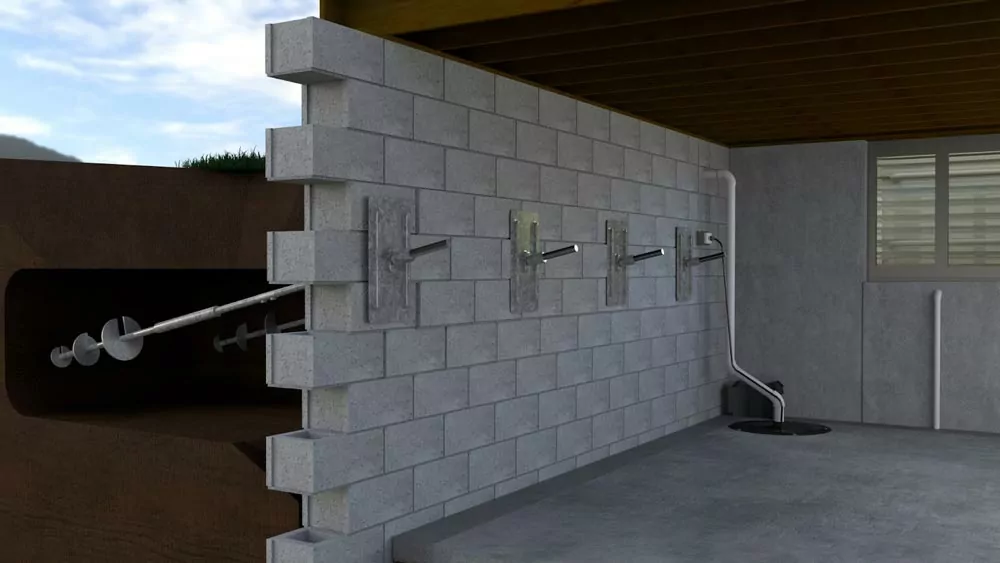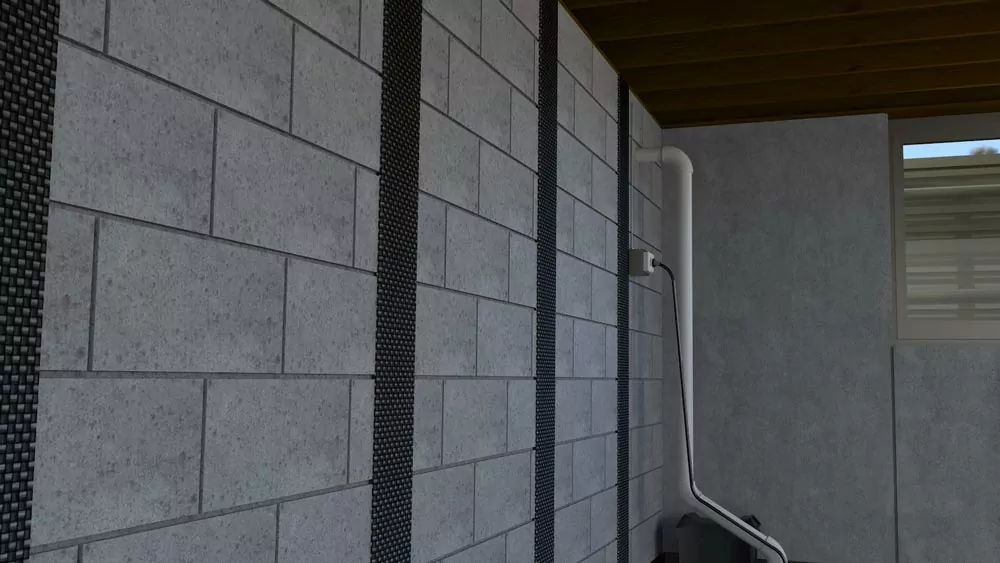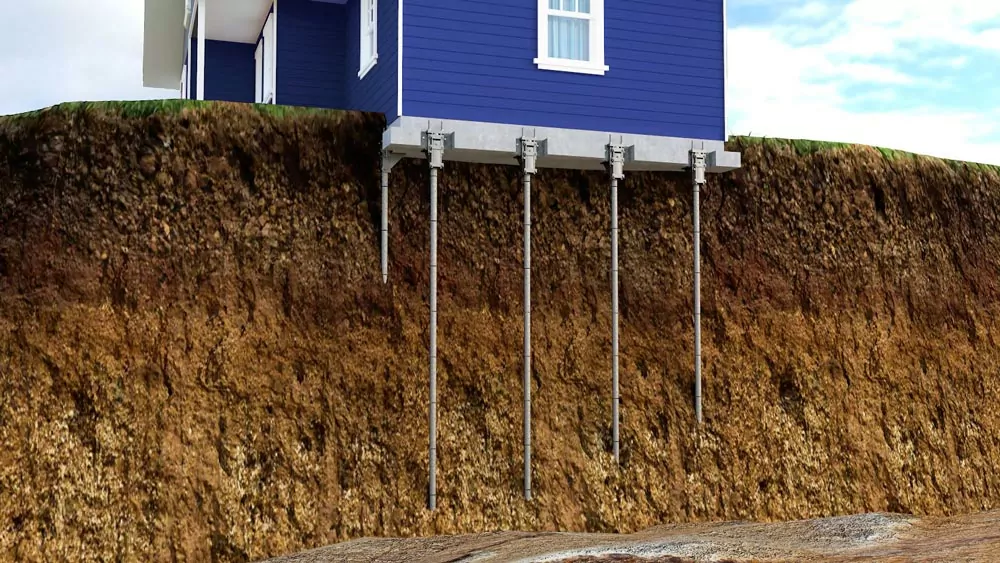Fortunately, not all basement wall cracks spell impending doom for your foundation’s structural integrity; some are just ugly, while others demand immediate attention. Factors like the cause, size, and location of the fracture play significant roles in determining the right fix. This blog aims to demystify basement wall crack repairs, outlining some possible options and providing the insight you need to take action. To pave your path towards a foolproof foundation, AMC911 is your ally, offering a cost-free foundation inspection to accurately diagnose your basement blues and present you with a thorough repair estimate.
What Causes Foundation Wall Cracks?
Common causes of foundation wall cracks include the following:
- Concrete Curing: As the concrete in a poured concrete foundation wall cures, it will shrink. Hairline cracks are likely to occur in a basement wall as this happens. Additional issues with cracking can happen during the curing process if too much or too little water is used in the concrete mixture. Shrinkage cracks are non-structural in that they don’t affect your home’s structural integrity.
- Hydrostatic Pressure: If water is not draining away from the foundation walls, it could build up in the area and put significant pressure on the wall. Even a small amount of hydrostatic pressure could eventually cause problems. Those problems could include the wall bowing inward and cracking. Hydrostatic pressure often causes long horizontal cracks to form.
- Differential Settlement: If the soil under the foundation no longer supports the structure’s weight, it can settle. Settling is common in all homes, but when the home settles faster in one area, it is known as differential settlement. Basement wall cracks could be a sign of differential settlement.
It is essential to determine why a crack occurred in the basement wall. After knowing why it happened, the proper foundation repair method can take place.
What Are The Warning Signs Of Foundation Problems?
Aside from basement wall cracks, you may see signs of foundation problems elsewhere in the home. Due to the shifting foundation, pressure is placed on the entire frame of the structure, resulting in these other issues.
- Sticking Windows and Doors: One of the first signs many homeowners notice is that the doors and windows stick when they open and close. This problem is due to the window and door frames getting out of alignment.
- Leaning Chimneys: The chimney is not always supported as well as the rest of the home. The chimney may begin leaning or separating from the main structure.
- Cracks in the Drywall: As the home’s frame is under significant pressure due to a sinking foundation, the drywall may begin to crack. These cracks may originate near the doors and windows. Drywall cracks due to foundation problems may sometimes carry over from the wall to the ceiling.
- Uneven Floors: When the floors get uneven, you may feel as if you are stumbling as you walk across the room.
- Separating Walls and Floors: Do you notice a gap forming between the wall and floor or the floor and the baseboard? That gap is a sign that problems are occurring with your foundation. Watch it carefully to see if it progresses.
Different Foundation Wall Cracks And Why They Happen
Some types of cracks may be an indication that foundation problems are occurring. Any foundation wall cracks should be monitored carefully for widening or lengthening.
- Hairline Cracks: A hairline crack typically occurs during the concrete curing process. They are generally not a cause for concern, but if hydrostatic pressure is building up near the foundation walls, they can allow water to seep in.
- Vertical Cracks: Vertical cracks are often caused by shrinkage during concrete curing and do not typically threaten the foundation but can allow water to seep in. Vertical cracks can be repaired with an epoxy crack injection.
- Diagonal or Stair-Step Cracks: When the orientation of a crack is stair-step, it is a possible sign of foundation settling. Monitor these cracks carefully and contact AMC911 if they are expanding or if you have concerns.
- Horizontal Cracks: Hydrostatic pressure is often the cause of long horizontal cracks in the basement walls. As the water outside the foundation wall puts pressure on the wall, it can cause it to bow and eventually crack. (A horizontal crack confined to a single block is not typically a cause for concern.)
Options For Repairing Basement Wall Cracks
Basement wall cracks can be concerning, but there are repair options available. The best method for basement wall crack repair will often depend on why it is happening and the extent of the damage.
- Wall Plate Anchors: When a basement wall is bowing and cracking due to hydrostatic pressure, it must be stabilized. Stabilization of the wall can be accomplished using wall plate anchors. A wall plate anchor consists of a steel inside wall plate measuring 12″ X 26″. This plate is connected to an exterior plate anchor using a 3/4″ threaded tie rod. It is an economical and effective method of providing the lateral force needed to stabilize a cracked and bowed basement wall.
Since hydrostatic pressure is leading to this type of basement wall crack, it must also be addressed. Installing a tile drain system, downspout extensions, and exterior grading may be used to reduce water buildup near the foundation walls.
- Carbon Fiber Straps: This is another common solution to stabilize a wall experiencing bowing and cracking due to hydrostatic pressure. Lightweight, high-strength carbon fiber straps are secured to the foundation wall with epoxy and help to spread the load evenly across the wall rather than having it focused on one location.
- Underpinning: When differential settlement occurs, underpinning stabilizes the foundation and keeps it from settling further. Steel piers are driven into the earth to a depth where competent soil or bedrock is reached. They can then be attached to the foundation to prevent further movement. Hydraulics can also be used to raise the foundation using those piers.
Why You Need A Foundation Inspection
Foundation and basement wall crack repair should not occur without a foundation inspection. This inspection is more than a superficial glance at the basement walls. It is an in-depth look at the entire foundation and more, allowing the foundation professionals to know why the problem is occurring and the best repair options.
AMC911 offers a free foundation inspection and repair estimate for those experiencing foundation cracks and other foundation problems. After the inspection, you will know what needs to be done to get your foundation back on track.




















